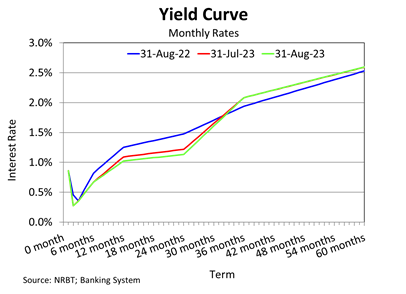Pick-up in yam and taro exports
- Details
- Category: Economic Releases
- Created: 09 January 2017
Agricultural Exports Volume September 2016
| Sep 16 | Aug 16 | Jul 16 | Jun 16 | |
| Total volumes (tonnes) |
785.0 | 707.3 | 879.9 | 514.4 |
The total volume of exports rose in September 2016 by 77.6 tonnes (11.0%) to 785.0 tonnes, a similar trend to previous years. This was mainly driven by a rise of 33.7 tonnes (21.4%) in the export of yam and a 33.3 tonnes (642.7%) increase in the export of taro. The lower price for both the taro swamp and taro tarua as reported by the Statistics Department at the end of the month implies a higher supply of taro locally and support the higher primary production during the month. Despite the prolonged dry weather and shortage in the supply of kava-Tonga, the export of coconuts and kava powder picked up by 9 tonnes (9.8%) and 7.4 tonnes (216.2%) respectively. In addition, the export of mulberry juice and breadfruit rose by 4.0 tonnes (from none in the previous month) and 1.5 tonnes (718.9%) respectively further contributing to the monthly increase.
The agricultural export proceeds however increased by $0.60 million (208.4%) over the month to $0.88 million. This largely reflected the lagged effects of the receipt of export proceeds from the time of export. An increase in the receipts denominated in US dollar, mainly from squash exported in the previous month, largely contributed to the higher proceeds over the month. The agricultural export proceeds are expected to increase in the coming months due to the squash season ending in November.
Total volume of agricultural exports increased over the year by 2,367.5 tonnes (31.7%), due to a rise in all of the major export categories except for the vegetable products, after recording negative growth of 29.9% over the same period last year. This was mainly due to an increase in the export volume of squash (126.2 tonnes), cassava (61.6 tonnes), yam (43.9 tonnes), sweet potatoes (9.6 tonnes), breadfruit (2.1 tonnes), watermelon (7.0 tonnes), kava (3.5 tonnes) and mulberry juice (1.4 tonnes). Total loans to the agricultural sector increased by $2.7 million (35.3%) over the year, which supported the higher supply of domestic products. The annual agricultural export receipts also rose by $2.5 million (54.9%) to $7.05 million. The higher export receipts were for squash and kava-powder which increased by approximately $0.7 million and $0.5 million respectively. Receipts for other exports such as Tongan crops, coconuts, and vanilla also contributed to the yearly rise. This was also supported by the strengthening of the Japanese Yen and US dollar against the Tongan Pa’anga.
On the outlook, NRBT expects that both the volume for export and domestic production will improve in 2016/17 supporting the expected growth in the agricultural sector. This is supported by the Tonga Agricultural Sector Plan (TASP) that was recently approved by Cabinet. The re-opening of the High Temperature Forced Air facility at the Fua’amotu Airport would support the export of breadfruit, papaya, tomatoes and the new products to be introduced such as chillies and eggplant. The initiatives from the January 2016 Agricultural Annual Conference to improve the existing infrastructure for farmers should also support the forecast of higher agricultural output, including the opening of the multi-purpose pack house in ‘Eua. The biogas demonstration farm set up with the assistance of the Chinese Government would provide organic fertilizer that may support the production of high quality fruits such as seedless watermelons.
Furthermore, the possibility of a new market for Tonga squash exports to China may boost total agricultural export volumes. The introduction of the Air New Zealand Boeing 777-200 aircraft provides extra capacity for more exports volume going forward. In addition, Tonga is currently negotiating the Pacific Agreement on Closer Economic Relations (PACER) Plus which may contribute to the increase. On the contrary, the exports of kava-Tonga are expected to decline as liaisons with growers have indicated low supply for the next 3 years due to the drought in past years. The August 2016 Climate update by the Meteorology Division advised that a weak La Nina (more rainfall than usual during summer) remains possible in 2016 and the rainfall is expected to remain normal (usual) in October 2016 to March 2017. The weather uncertainty poses a risk to the agricultural sector outlook.
Download the full report: Agricultural Exports Volumes - September 2016

